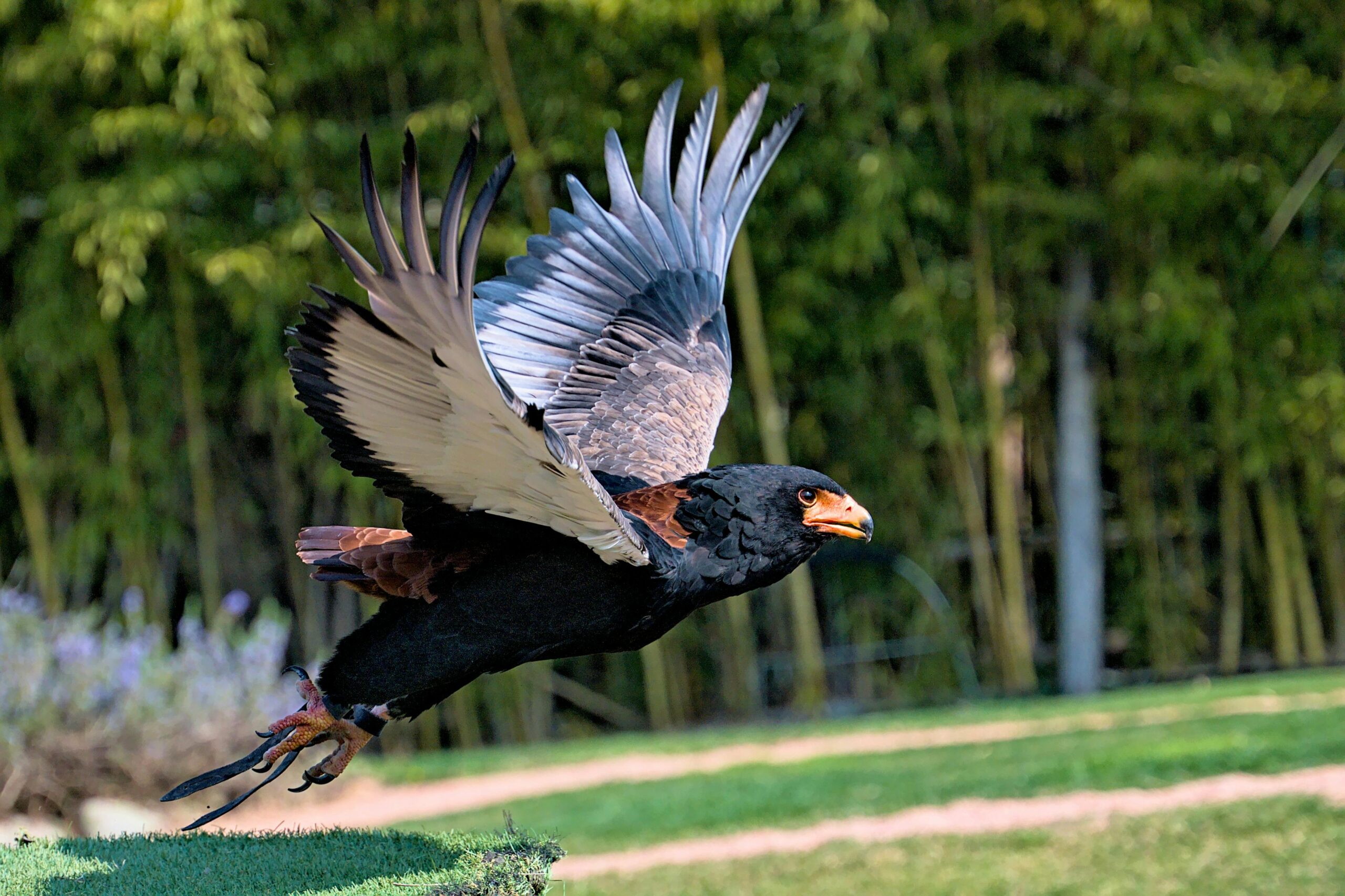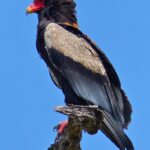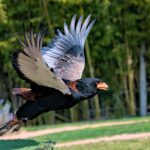The Bateleur Eagle (Terathopius ecaudatus) is a medium-sized, colorful eagle native to broad areas of Sub-Saharan Africa and scarcely up into Arabia. These highly aerial birds spend much time soaring and are known to be declining in overall population, mostly confined to protected areas today.
The Bateleur Eagle’s Preferred Habitat
Bateleurs are birds of the open savanna country and woodland (thornveld) within Sub-Saharan Africa; they also occur in south-western Arabia. They are found in closed-canopy savannah woodland habitats, including Acacia savannah, Mopane and miombo woodlands. They are very common in broad-leaved woodland in the Okavango Delta. In Namibia, bateleurs are often found over tall woodland near drainage lines, and ephemeral rivers in north-eastern Namibia and within the more arid Etosha National Park.
Bateleurs are tree-nesting birds with a large home range. They live in pairs but each pair is territorial and in most areas lives alone. Bateleurs are generally silent but can produce a variety of barks and screams. These birds are active during the day, spending a considerable amount of time on the wing, hunting from swift, direct gliding flight across the country, or in wide sweeping circles.
Threats to the Bateleur Eagle’s Habitat
Sadly, Bateleurs are suffering the same fate as so many other wildlife species. Their range is shrinking in many areas due, in large part, to habitat loss. Even where habitat remains, these beautiful eagles are also being poisoned! Ranchers will often lace a dead cow, sheep or other bait with highly toxic poisons in an attempt to kill jackals, lions, hyenas and other predators that they fear might prey on their livestock. Because Bateleurs scavenge on carcasses, many of them die after ingesting these poisons, which are also responsible for the deaths of many other animals including vultures and storks.
Recent studies suggest that as long as individual Bateleurs remain in protected areas, such as national parks, they will do okay. But, as soon as they leave the boundaries of the park – remember, birds don’t recognize such things as country borders or park boundaries – they become vulnerable to poisoning.
The Bateleur Eagle’s Diet and Reproduction
Bateleurs are carnivores and scavengers; they will attack other species for food and will scavenge carrion. Bateleurs hunt birds and their eggs (mainly doves and pigeons), small reptiles, small mammals (like rodents, genets, and mongooses) and insects.
Bateleurs are long-lived species, slow-maturing, slow-breeding species. Bateleurs court each other or re-establish existing pair bonds with a “spectacular” courtship display. During the courtship display, an exaggerated flight is undertaken, in which the male dives down at the female who rolls to present him her claws. Additionally, he sometimes flies with legs dangling loosely, during which the wings may be flapped to create a conspicuous whup-whup-whup noise like a loose sail in the breeze.
Bateleurs will stand on the ground with their wings spread, exposing the feathers to direct sunlight, warming the oils in the feathers. The bird will then spread the oils with its beak to improve its aerodynamics. In some countries, local nicknames of the species may include as the “Conifer eagle” or “Pine eagle” due to its feathers resembling a conifer At times, this is described as a “striking heraldic posture”.
Bateleurs may also be seen perched in large groups of more than 20 individuals. Juvenile Bateleurs have longer tail and wing feathers than their parents. Young eagles need these longer feathers for better lift and control during their first flights.
Conclusion
The Bateleur Eagle is a fascinating and unique species that faces significant challenges due to habitat loss and poisoning. Conservation efforts are crucial to protect these magnificent birds and ensure their survival for future generations. By understanding the Bateleur Eagle’s preferred habitat, diet, and reproductive behaviors, we can better appreciate and safeguard this iconic species of the African savanna.
References:
– Bateleur (Terathopius ecaudatus) Fact Sheet – LibGuides
– Bateleur Eagle – The Peregrine Fund
– Bateleur – Wikipedia
– Bateleur Eagle – Terathopius ecaudatus – Kruger National Park
– Bateleur – Facts, Diet, Habitat & Pictures on Animalia.bio



